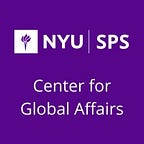OPEC+ & The Oil Market Free-For-All
In the 1960s all of the largest exporters of oil came together and formed a cartel called the OPEC, or Organization of Petroleum Exporting Countries, with the intention of regulating oil production and market prices across the globe. Except, this OPEC excluded two major global superpowers that wanted to contribute to the market on their own terms: the United States and Russia. Amy Jaffe, Director of the NYU SPS Energy, Climate Justice, and Sustainability Lab, recently spoke with Marketplace about the fluctuation in the oil market’s prices and the key players responsible. According to Jaffe:
“They were starting to lose control of the market, especially because the United States was becoming a major oil exporter,” […] The fracking boom here in the U.S. helped cause a crash in oil prices, “and so they had to do something to increase their, what we call in economics, ‘market power,’” […] “To do that, they formed a partnership — mainly with Russia — but also with some other producers that were previously not in OPEC. And that is called OPEC+,”
Interested in reading more? Read Marketplace’s full article here.
Excerpt from Marketplace’s To stay atop the oil market, OPEC became OPEC+. But keeping the cartel in sync isn’t easy.
